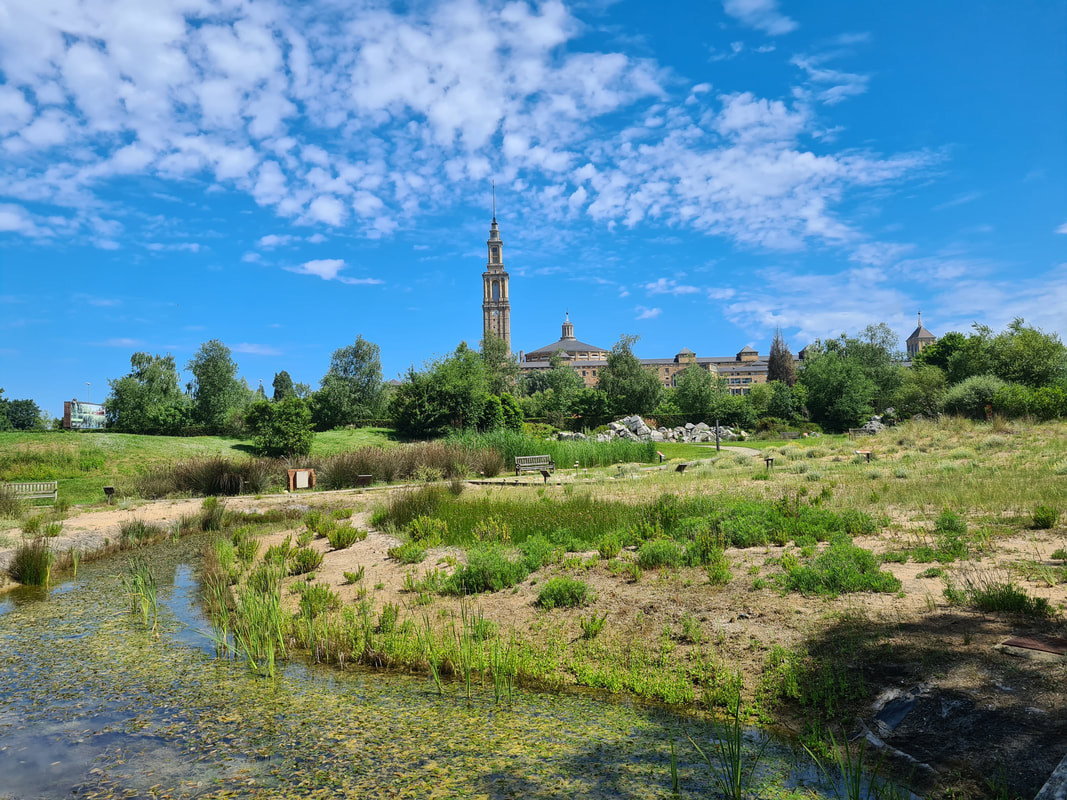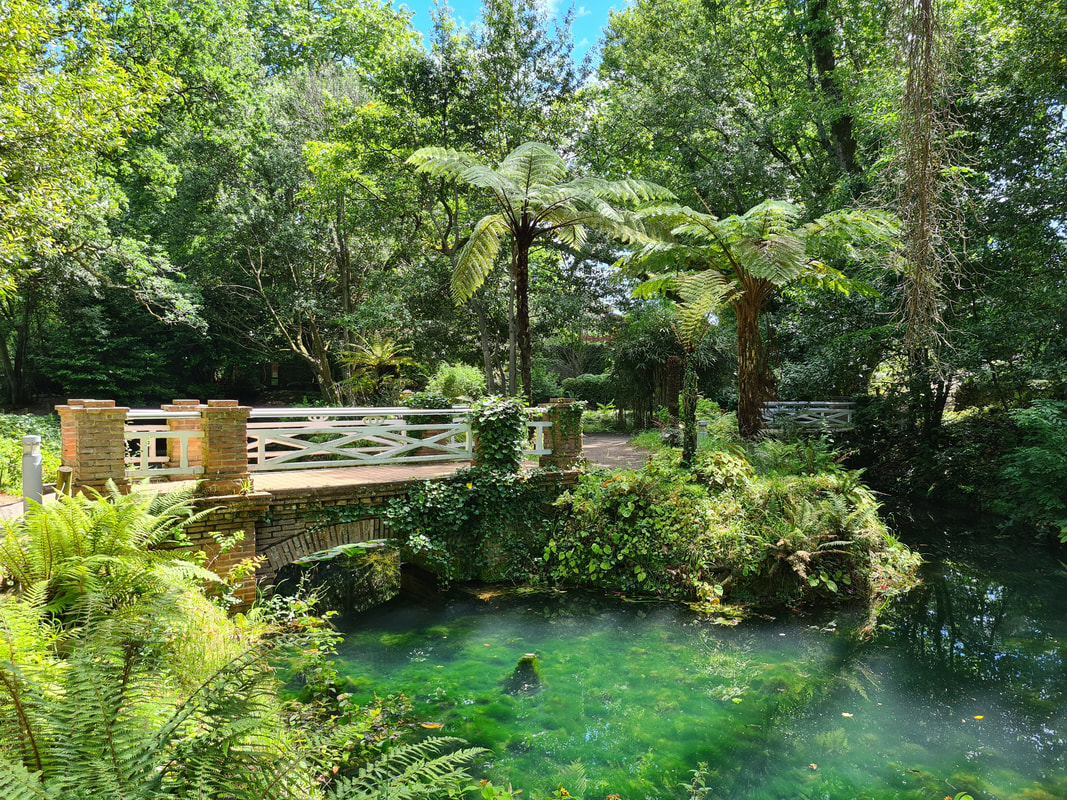|
On a sunny day in June , I arrived by bike at the Jardín Botánico Atlántico de Gijón (www.gijon.es/es/directorio/jardin-botanico-atlantico-de-gijon) . This Atlantic botanical garden opened to the public in 2003 with as main focus to study and conserve the flora and vegetation of the North Atlantic. It is the first Botanical Garden in the northwest of the Iberian Peninsula covering an area of 19 hectares, although the plan is to expand it to approximately 25 hectares. Its design took advantage of the existance of the historic Garden of La Isla and two magnificent natural forests that had survived the urban expansion of the city of Gijón: Aliseda del Río Peñavalencia and La Carbayera de El Tragamón, an exceptional forest of centuries-old oaks. The collection of plants which now stands at 30,000 different plants from 2500 species provides a green oasis away from the hustle and bustle of Gijon. Within the gardens are exhibitions which are laid out in various buildings, including a traditional Asturian farmhouse (the Quintana de Rionda) and the exhibition pavilion dedicated to Carlos Linneo, as well as a beautiful children's area (El Bosque del Cuélebre) and a fun labyrinth of laurel. The Atlantic Botanical Garden has six main collections. The living plant collections are organized into four thematic areas that use the Atlantic Ocean as a common thread:
In addition, there are also two biodiversity collections: the Germplasm Bank and the Herbarium. The Cantabrian environment: In the Cantabrian Environment, ecosystems typical of the Cantabrian Sea are recreated, such as forests, high mountain habitats and other typically coastal ones. The plant factory: The collections of the Plant Factory are dedicated to the plants present in our daily lives, such as food, medicine, fabrics or religious symbols. In this area, you find a lovely vegetable garden, but also stone labyrinth. Contained within its winding walls are toxic plants such as nightshade, wolfsbane, henbane, oleander, and mandrake. It’s hypothesized that some of these plants may have been used in ancient European witchcraft. The Island Garden: The Historic Garden of La Isla, is a romantic garden from the end of the s. XIX that integrates the beauty of the ornamental flora with the symbolism of water. The colour of the water is just fabulous, sometimes almost being as green as the plants themselves. Atlantic Itinerary: The Atlantic Itinerary is dedicated to the plant landscapes (Biomes) of both shores of the North Atlantic. Currently, the Temperate forests of Europe and the recreation of the Boreal, European and American biomes can be visited. Another noteworthy feature is that the gardens are overlooked by the impressive Laboral Ciudad de la Cultura. Originally built as a learning center for orphans, it currently hosts several cultural institutions. Built between 1946 and 1955 by the Ministry of Labour, it is considered the most important architectural work built in the 20th century in the Asturias region and, with its 270,000 m2, the largest building in Spain,
1 Comment
2/17/2023 02:41:00 pm
Gorgeous place. Something about that shade of green that makes it entice me. Good to see the green initiative behind it too. I am just a sucker for forests, gardens and the trees, views, etc.
Reply
Leave a Reply. |
�
About the AuthorWe are Peter & Dolores De Bie. We love the great outdoors, discovering new parts of the world and writing about our adventures along the Wild Atlantic Way and further afield Categories
All
|
Contact us |
Where are our visitors from |
copyright © 2024 www.outdoorfitnesssligo.com
©Website design by Outdoor Fitness Sligo
©Website design by Outdoor Fitness Sligo







 RSS Feed
RSS Feed
